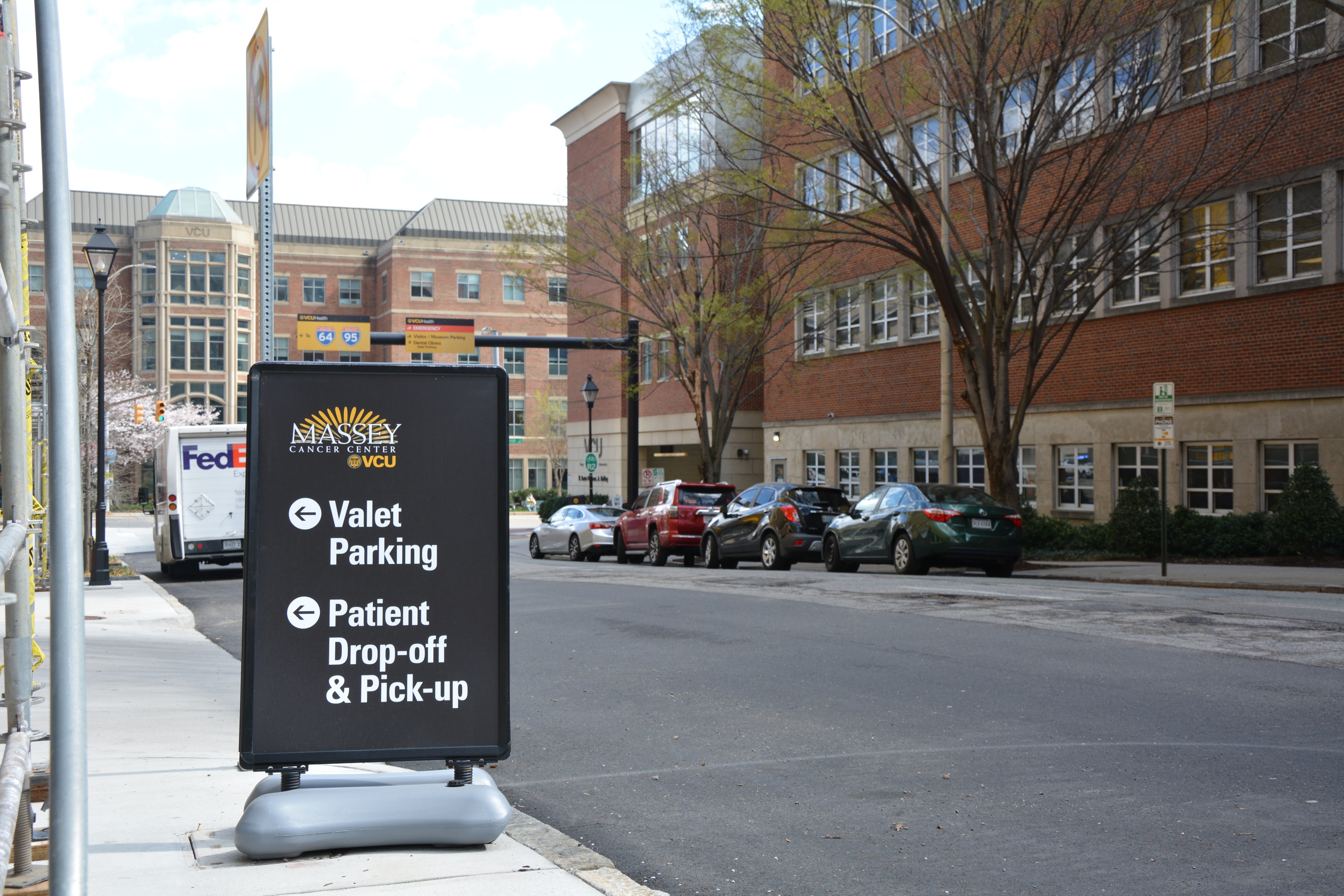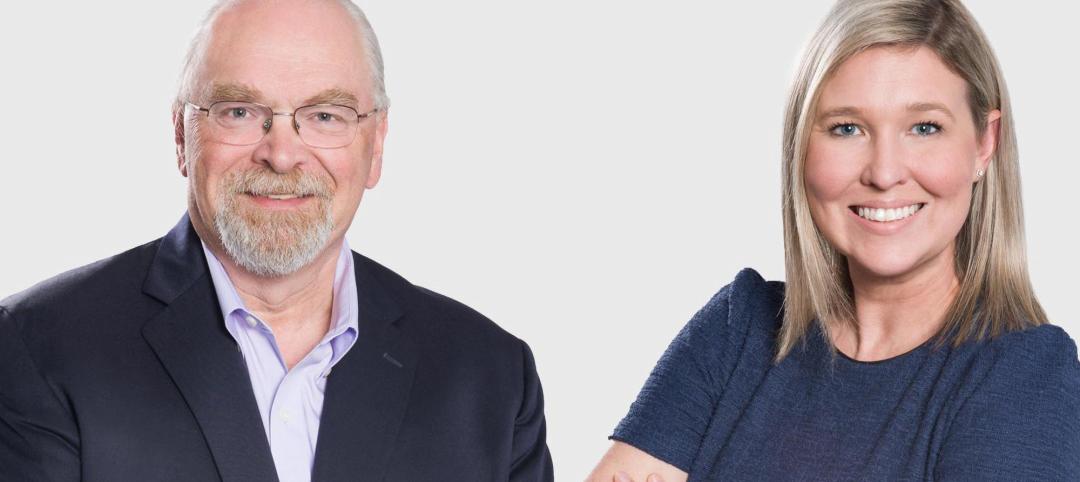Architects, engineers, and building owners often ask themselves, Why does parking matter in healthcare facilities design?
To answer that question, we can use recent experience designing parking facilities at the Virginia Commonwealth University Health (VCU Health) Outpatient Pavilion Garage in Richmond, Va., Cone Health in Greensboro, N.C., and Wake Forest Baptist East Tower in Winston-Salem, N.C., as examples.
Parking is likely a patient’s—and their families—first and last touch with a healthcare facility. As such, the arrival and departure parking experience can have a profound impact on their experience with the healthcare facility.
What can healthcare facilities do to ensure to enhance their visitor’s parking experience? First, provide ample parking and ensure that the facilities are easy to navigate. Second, keep the walking distance between the parking and healthcare facility short and brief. Finally, and most importantly, offer the option for visitors to opt for front door valet services as well as providing designated drop-off and pick-up areas for family members and services such as Uber/Lyft and taxis.
Healthcare design advice for valet service and drop-off/pick-up areas
Valet services at healthcare facilities provide front door access for visitors in addition to shorter walking distances for the mobility impaired. This option can significantly reduce the stress associated with navigating a parking garage while concurrently reducing the time and distance from vehicle to the destination within a healthcare facility.
Designated drop-off and pick-up areas offer flexibility for patients, family, and caregivers. They also provide healthcare facilities with a transportation network for Ubers/Lyft’s, taxis, and medical transportation services.
Both services also provide healthcare facilities flexibility for the future as it pertains to self-driving vehicles and centralized parking facilities.
Parking facility design for healthcare settings
At Walter P Moore, we use PTV Vissim, a multi-modal traffic simulation software that allows us to provide a 3D microsimulation of transportation facilities. The software digitally represents all road users—vehicles, pedestrians, buses, bicycles, trucks, trains, etc.—in a network.
The software was used when designing the parking facility at the VCU Adult Outpatient Pavilion, a 615,000-sf structure that combined several existing services into a new building. This included over 1,000 parking spaces and entry to the parking facility was provided on two different levels due to the sloping grade on the site.
There were several concerns regarding the new facility. Chief among them were the potential for vehicle queuing backing up on the street and the potential for a high number of pedestrians crossing pick-up lanes to access the main entry.
Unlike traditional traffic studies that look at the AM and PM peak periods, when traffic volumes on the roadways are highest, for healthcare projects we often use projected volumes for the midday peak period because in healthcare facilities, that is when you have the largest number of people coming and going to the facility.
Using volumes for existing facilities VCU Health and growing them to reflect the new program, it was estimated that the following volumes would be trying to utilize the new building: Massey Cancer Center Valet (76 entering, 51 exiting); Clinic Valet (93 entering, 84 exiting); Drop-off/Pick-up (24 entering, 14 exiting); and Self-Parking (220 entering, 128 exiting). We also studied dwell times at VCU Health’s exiting valet services and found the average dwell times for type of patient served. For the Massey Cancer Center, it took approximately 120 seconds to drop-off a vehicle and 90 seconds to pick-up a vehicle. At the Clinic Valet it takes approximately 120 seconds to drop-off and 60 seconds to pick-up. Patients that were not valeting and just dropping-off or picking-up take approximately 20 seconds.
Using this data, both levels with drop-off and pick-up activities were models to show that even during the busiest peak periods, all operations would occur on the site and not spill out onto adjacent streets and block traffic in the busy downtown Richmond area. The 3D models allowed the VCU Health administration and City officials alike to feel comfortable that this solution would work for the foreseeable future.
Is there enough space?
At Cone Health, administrators and providers were concerned about queuing for the valet and pick-up/drop-off area as well as the overall patient experience for their new Heart and Vascular Center. Walter P Moore gathered data from their existing clinics, scaled the data to the new facility, and modeled different scenarios to ensure Cone Health and their providers that there was enough space for parking and valet services and that patient experience would be prioritized.
Two different scenarios were studied regarding dwell times for valet and transport vehicle drop-off, valet pick-ups, and the self-parking exit route. The dwell times were consistent with observed times at other hospital facilities across the US. The study revealed that with a few minor adjustments to the design, there would be ample space for curbside operations and that by providing a direct exit for visitors from the garage—so they can avoid the valet zone entirely—the number vehicles circulating thru the drive could be minimized, thus further reducing congestion. This also ensures that if there was a back-up at the drop-off/pick-up area, vehicles could still exit the garage without having to wait.
Furthermore, the study recommended that if valet spaces were reserved on the ground floor of the garage it would allow valet vehicles to exit more quickly, keeping valet wait times down—while concurrently minimizing staffing needs. The design of the structure allowed self-parkers to proceed directly to the upper levels without passing all of the valet spaces, keeping these functions separate.
During the study, there were concerns about some of the transport vehicles that may need to stop for longer than 3-5 minutes to load or unload, potentially blocking the drive. Designated parking spaces on the ground level were added to provide a space for vehicles out of the main vehicular patterns, thus eliminating this concern.
Make sure to stress test healthcare parking designs
The Wake Forest Baptist East Tower project erected a new care tower to provide improved facilities for existing services. An existing parking deck was replaced by the new tower, which limited the options to create new valet or drop-off/pick-up zones. Furthermore, the existing horseshoe that served as the main drop-off/pick-up area was already severely congested.
Walter P Moore analyzed the horseshoe area using existing counts from August 2022 as well as valet volumes to determine the flows and locations for different activities to maximize the capacity of the area while improving the patient experience by making it easier to navigate. To account for the fact that there were COVID visitor restrictions in place when the counts were performed, the system was stress tested by growing the volumes to determine the capacity for growth.
Based upon the analysis, it was determined that there was capacity for growth of approximately 10 percent in the valet area. With this knowledge, the hospital system can monitor valet volumes in the future with the knowledge that as volumes increase closer to the 10%, they should start to study alternative locations for valet services in order to maintain the best level of service for all of their patients and visitors.
While parking is not the most important part of a patient’s experience at a healthcare facility, as the first and last touch with the facility, it has the potential to leave a lasting impression. Using micro-simulation modeling allows healthcare facilities to better understand and make improvements to their operations both for existing and proposed facilities so that their patients and visitors have a better experience and enjoy coming to their facilities instead of dreading it.
How could your operations be improved of you could test them before building?
About the Author
Beth Bryan, PE, PTOE, PTP, STP2, is a Principal and Project Manager in Walter P Moore’s Parking Group. She can be reached at bbryan@walterpmoore.com.
More from Author
Walter P Moore | Oct 7, 2024
A journey through masonry reclad litigation
This blog post by Walter P Moore's Mallory Buckley, RRO, PE, BECxP + CxA+BE, and Bob Hancock, MBA, JD, of Munsch Hardt Kopf & Harr PC, explains the importance of documentation, correspondence between parties, and supporting the claims for a Plaintiff-party, while facilitating continuous use of the facility, on construction litigation projects.
Walter P Moore | Mar 11, 2024
BIM at LOD400: Why Level of Development 400 matters for design and virtual construction
As construction projects grow more complex, producing a building information model at Level of Development 400 (LOD400) can accelerate schedules, increase savings, and reduce risk, writes Stephen E. Blumenbaum, PE, SE, Walter P Moore's Director of Construction Engineering.
Walter P Moore | Jan 18, 2024
Walter P Moore promotes former 40 Under 40 winner Kelly Roberts
In addition to her role as a Principal, Roberts is a distinguished leader in structural design with an extensive portfolio encompassing diverse projects such as educational and healthcare facilities to commercial and healthcare structures.
Walter P Moore | Sep 8, 2023
Secrets of a structural engineer
Walter P Moore's Scott Martin, PE, LEED AP, DBIA, offers tips and takeaways for young—and veteran—structural engineers in the AEC industry.
Walter P Moore | Jul 12, 2023
Building movement: When is it a problem?
As buildings age, their structural conditions can deteriorate, causing damage and safety concerns. In order to mitigate this, it’s important to engage in the regular inspection and condition assessment of buildings for diagnosis.
Walter P Moore | Jun 14, 2023
The high cost of low maintenance
Walter P Moore’s Javier Balma, PhD, PE, SE, and Webb Wright, PE, identify the primary causes of engineering failures, define proactive versus reactive maintenance, recognize the reasons for deferred maintenance, and identify the financial and safety risks related to deferred maintenance.
Walter P Moore | Jun 5, 2023
How to properly assess structural wind damage
Properly assessing wind damage can identify vulnerabilities in a building's design or construction, which could lead to future damage or loss, writes Matt Wagner, SE, Principal and Managing Director with Walter P Moore.
Walter P Moore | Jun 5, 2023
27 important questions about façade leakage
Walter P Moore’s Darek Brandt discusses the key questions building owners and property managers should be asking to determine the health of their building's façade.














